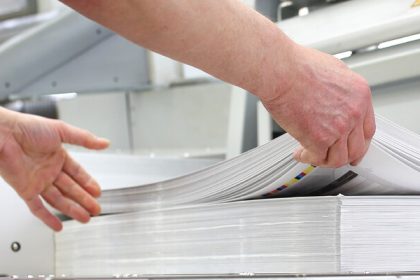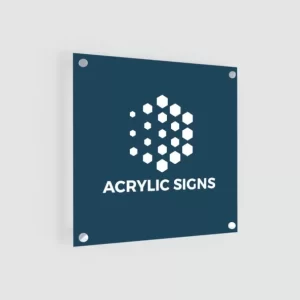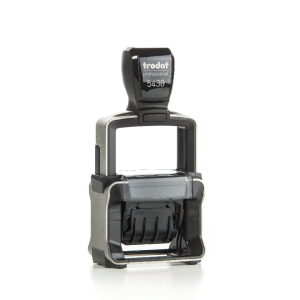RGB and CMYK are standards among all the color systems, but, how much do you know about them?
These two models serve specific purposes and have fundamental differences to understand, whether you’re creating a design, receiving one, or just curious. This informative post explains those differences in simple terms and gives some tips for using them.
Color models, profiles, systems, spaces, or modes?
Some of these terms get used interchangeably, so to help clear up some confusion, here are the basic definitions of what they mean:
Color model – The theory and foundational principles that define a color system.
Color system – How the color model functions in practice. How it works.
Color space – The totality of colors that can be produced by a color system.
Color mode – The formatting of a document to adhere to a particular color system.
Color process – This typically refers to the process of printing or displaying images.
What’s the difference between RGB and CMYK?
The most important difference about these color modes is that RGB is for display on electronic screens (ie: computers, TVs, cameras, smartphones), while CMYK is for printing (ie: magazines, photographs, product packaging, direct-to-garment). RGB has a wider gamut (range of colors) than CMYK.
They both start with three primary colors that are combined to make all the other colors. For RGB it’s red, green, blue. For CMYK it’s cyan, magenta, and yellow. RGB is an additive process using colored light, and CMYK is a subtractive process using the pigment of inks, dyes, or paint.
These two systems are fundamentally different– you can call them opposite– so it’s important to know the difference. Since most printers and commercial print companies will convert your file for you, the only thing to worry about is if you are working in CMYK mode when it doesn’t need to be (your colors will be somewhat limited).
What is RGB?
RGB stands for red, green, blue and is the color mode for computer screens, TVs, smartphones, and more. RGB has a wider gamut (range of colors) than CMYK and includes bright, saturated, and fluorescent colors. All RGB images must eventually be converted to CMYK+ to be printed.
RGB is an additive color system that uses the emitted light from a screen or projection. It starts out with a base of pure black when there is zero light, and produces pure white when all of the colors are combined at full intensity. Each color has a brightness level that goes from 0 to 255.
Theater lights work on the same principle. If you point red, green, and blue colored lights at the same spot, you will get something close to white. If you spin a color wheel very fast, you will also see white.
On a computer screen, each of the millions of pixels has three subdivisions, which are lit with the colors red, green, and blue to varying degrees, which combine to create a wide variety of colors that our eyes can recognize from a normal distance.
When to use RGB
If you’re creating a print design, the common wisdom is to work in CMYK to avoid a color shift when it goes to print or to convert it before sending. With modern printing technology, it’s no longer an issue. Most commercial printers not only accept RGB files but prefer them.
If you’re creating a design that will only be seen on an electronic screen, you should work in RGB. This will allow you to access the full range of bright colors this model can achieve. And after all, CMYK on the computer is just an approximation of the color model– displayed in RGB.
How to use RGB
Each color of RGB is given a value of 0 (least saturated) to 255 (most saturated), making a total of over 16 million colors that can be represented in the color space. In Photoshop and other image editing software, you can set these values, or choose your color first and make a note of the numbers. Better yet, save it as a swatch.
What is CMYK?
CMYK is a color process used for printing, especially for photo-realistic images and those with lots of colors. The inks are semi-transparent and blend together to create a range of colors. It’s based on the CMY model in which cyan, magenta, and yellow are the primaries.
The CMY model is similar to the basic color theory that most people learned in school, and based on the same principles that artists use when mixing colors with paint. If you remember the color wheel, secondary and tertiary colors, you have a head start on understanding CMYK.
In the printing world, CMYK is also known as “4-color process”. Because of the transparency of the inks, the full combination of C+M+Y isn’t quite dark enough, black ink is used for the 4th color, represented by K.
How to use CMYK
If you use Adobe Illustrator, new files will default to CMYK, so you’ll already be in that space. InDesign operates independently of color modes. Adobe Photoshop defaults to RGB, so start by switching to CMYK under Image > Mode before creating your design. That way none of the colors you choose will change when printed.
How does CMYK work?
CMYK is known for reproducing photographic and photo-realistic images. These types of images have subtle blends, gradients, and details. So how does CMYK do that with just 4 colors? This is where halftones come in.
Halftones are basically just tiny dots that create an optical illusion. If you look very closely at any magazine or printed item (like magnifying glass closely) you will see the halftone patDither is a different form of halftones that uses tiny dots of the same size in a randomized pattern (aka frequency-modulated) for a natural continuous-tone look. More advanced print systems are adopting this format. Our DTG machines use dither for a more detailed and accurate print, especially with photographs.
How to make a rich black
If you have black areas in your CMYK printing design that you want to be darker, here’s how to do it. Plain Black is just 100% K and looks like a dark warm gray. Set your sliders to these percentages for rich black, as shown below: C=75%, M=68%, Y=67%, and K=90%.
You might be wondering why not just max all the colors out to 100%? While you can do that, it’s not recommended because it becomes too saturated with ink. Problems can arise, like ink gain, smudging, blown out shadows, and even damage to the paper it’s being printed on. The point is to have all the colors doing work to make the black, but just don’t overdo it.
FAQs about working in different color systems
Now onto some of the most frequently asked questions about working within color systems.
While RGB is an incredibly powerful color model for computers, it’s not the most intuitive system for humans to pick and adjust colors. Even experienced designers are not going to pick colors based on the numeric value. That’s where HSB comes into play.
What is HSB?
HSB stands for hue, saturation, brightness and is a more user-friendly system of picking and adjusting colors. It operates within the RGB color space but gives you a much easier way to choose. You can use the sliders to set the level of each variable, and when you’re happy, there will be RGB values you can save.
The Hue slider is based on a number out of 360 degrees (think of the rainbow in a full circle). Saturation is the richness of the color (go to 0% and it’s gray), while Brightness is like a lightbulb (go to 0% and it’s black). You can click anywhere on the color field below the sliders to get a starting point and adjust as needed.
With these controls (found in most graphic design or image editing software) you can easily find the exact color, shade, and tint you desire, and not worry about RGB numbers at all, only how your image will print.
Can RGB images be printed?
Technically, no– RGB must be converted to CMYK mode first; either by you, your home printer, or the printing company you send it to. A new and novel technique is being developed to print using an RGB process, but it’s not widely available (and probably expensive).
What file formats are best for RGB?
PNG is the best format for RGB images because it allows for millions of colors, a transparent background, is compatible with most systems for digital display, and has a small file size.
JPG or JPEG is also an excellent format for RGB images. Universally compatible and the most popular image format. It allows for a variety of compression settings for smaller file sizes.
GIF should be used if your image is animated, or you’re looking for the smallest file size possible. The compression can change the look as it drastically reduces colors, depending on the settings.
PSD (Adobe Photoshop) s the standard file format for graphics in RGB format. You can convert to almost any color space and format for any platform or media.
What file formats are best for CMYK?
AI (Adobe Illustrator) is the standard file format for CMYK images. It’s a vector program so there are no issues with resolution or resizing graphics. Opening a new file defaults to CMYK.
EPS is a great format for CMYK because it has all the benefits of a vector file type but is compatible with other vector programs. It also has great compression for smaller file sizes.
PDF is another standard and great for CMYK files. It has many options for saving, file type, and compression. It saves bitmaps, vectors, and combination files. It also has a robust compression engine, just be careful. You may want to look into some of the save settings to get familiar.














